Estetic-concept
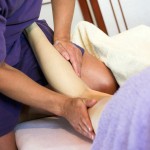
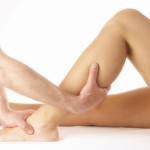
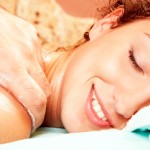
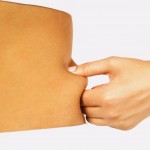
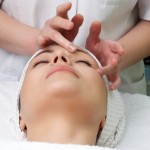
Programme will be of interest to cosmetologists and massage therapists of beauty salons, cosmetic clinics, health centres, and private practitioners. The techniques of this program have more selective impact upon particular systems of organs and tissues and achieve more definite aesthetic and therapeutic results. They are often included into programs of medical rehabilitation and used as supplementary correction methods for many pathologic conditions. Higher level of professional qualification and work experience are required from those wishing to study on this program.
Participants qualify for International Diploma in Body Aesthetics.
Complex restructuring of the soft tissues of the face – Transbuccal massage
At the heart of my author’s program of global facial rejuvenation is a complex transbuccal massage that combines the following sections: muscular-articular decompression, osteopathy, deep interfascial drainage, correction of lipo-dystrophic changes and muscle toning. This multi-layered manual correction program requires a subtle, differentiated approach to different facial morphotypes, age categories, and comorbidities. For this reason, at the first stage, we analyze the initial state of the soft tissues of the face and draw up an algorithm for subsequent correction.
The name of the technique indicates that massage is carried out on both sides of the soft tissues of the face, both inside and outside the mouth.This technique allows to restore the volume, tension and flexibility of the deepest muscle bundles of the buccal and nasolabial areas, to free the interstitial spaces from unnecessary fluids and to improve the structure of the connective tissue.
Indications for transbuccal massage:
✓correction of deformational & dystrophic types of ageing;
✓ scars and post-traumatic soft tissue deformations;
✓paresis and paralysis of facial muscles (only during rehabilitation after strokes and infectious diseases);
✓hypertonus (excessive tension) of the facial muscles;
✓chronic facial swelling due to lipodystrophy (atrophy or significant obstruction of adipose tissue);
✓restoration of the muscular corset after dental braces.
The technique of transbuccal massage is performed by bilateral capture of the muscles and fascia that form the buccal and nasolabial areas of the face. This makes it possible to fully restore the volume, tone and elasticity of the deepest muscle bundles that form the muscular corset of the face. This technique acquires special value when working with post-traumatic changes: paresis, facial paralysis, scars, hematomas. It allows you to significantly accelerate the processes of drainage, restore the vascular bed and the architectonics of the connective tissue. Straightening tissues from the inside through deep decompression and stretching, we restore the work of vascular collaterals, accelerate regeneration and detoxification. Transbuccal massage is of great interest in the correction of deformative-dystrophic types of aging, when there is a displacement of facial fat, their hypertrophy and fibrous changes, especially against the background of the following: thread lifting, numerous injections of fillers, ultrasonic lifting, when classical massage techniques “do not work”. In addition, transbuccal massage becomes important in the prevention and correction of persistent spasms of the mimic and masticatory muscles of the face in a young group of patients with a high risk of neurological disorders. And finally, such a massage technique can be considered as a way to comprehensively prepare the soft tissues of the face for the planned plastic surgery, serious cosmetic procedures – peelings, biorevitalization, contouring. Transbuccal massage works in perfect synergy with gymnastics for the muscles of the face.
Myoplastic massage.
The massage technique is aimed at the main mechanisms of natural biological aging, as well as early involution processes associated with exposure to stress, solar radiation and endogenous factors. Myoplasty facial massage to some extent replaces plastic correction in terms of efficiency, and surpasses it in terms of stability and long-term results. In addition, it can be used as a full-fledged stage of preoperative preparation and post-plastic rehabilitation, helping tissues to cope with traumatic damage faster and more efficiently. The focus of the massage technique is on the muscular frame of the face and neck. The purpose of the technique is to restore muscle tone and turgor of surrounding tissues, restore an adequate level of blood circulation and nervous trophism. The most important result of a myotonic facial massage will be a bright lifting effect with alignment and strengthening of the face oval, a decrease in the depth of mimic wrinkles and an improvement in skin color and turgor. If we are talking about the rehabilitation of tissues after injuries or plastic surgeries, then we expect the fastest repair and detoxification of tissues from decay products, a decrease in fibrosis processes and a reduction in the recovery time of the body. A powerful method for correcting age-related degenerative changes in the soft tissues of the face and body, affecting the processes of natural biological aging of tissues, as well as early involution associated with the influence of adverse endogenous and exogenous factors. In addition, myotonic massage is used as an important stage of post-traumatic and post-plastic rehabilitation.
The main indications for massage:
– gravitational type of aging of facial tissues;
– asymmetry of the face;
– a general decrease in the tone of the muscular corset of the face, neck and chest;
– lipodystrophic changes in the lower parts of the face (shift of fat packs);
– swelling, dark circles and ptosis (sagging) of the skin of the eyelids;
– restoration of the skin after injuries and plastic surgeries (work with scars);
– rehabilitation against the background of paresis and paralysis of the muscles of the face;
The gravitational type of tissue aging, as a rule, is always combined with local lipodystrophic changes, which are most pronounced in the region of the lower and middle thirds of the face (the region of the lower jaw, nasolabial fold and infraorbital zone) The cascade process of lipodystrophic changes begins with the loss of skin turgor and the displacement of the superficial and deep fat packages of the face to the lower parts – ptosis.
The main task in the correction of lipodystrophic changes:
– lipolysis (decrease in the volume of body fat);
– micro-traumatization of the skin (includes the process of regeneration);
– defibrosis (resorption of local fibrosis in the area of mimic compressions).